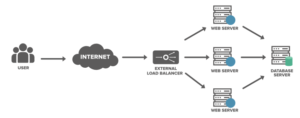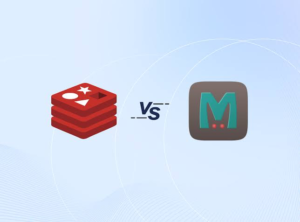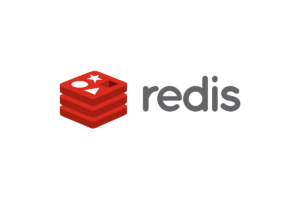
Introduction
In the intricate tapestry of modern technology, where information flows ceaselessly and insights drive innovation, lies a cornerstone of data management: Relational Database Management Systems (RDBMS). These systems form the backbone of countless applications, from the apps on our smartphones to the complex machinery of global enterprises. In this exploration, we delve into its realm, peeling back layers to grasp its essence, uncover its mechanics, and recognize its vital role in shaping our digital world.
At its core, it is more than just software; it’s a structured framework that orchestrates the dance of data. Through a symphony of tables, keys, and queries, it transforms raw information into actionable insights. This blog post will serve as your guide to this intricate symphony, unveiling the key notes of its design, the harmonious relationships it establishes, and the grand performances it enables across industries.
So, whether you’re a curious newcomer to the world of databases or a seasoned technophile seeking to deepen your understanding, join us as we embark on a captivating journey into the heart and soul of Relational Database Management Systems.
Understanding RDBMS
A Relational Database Management System (RDBMS) serves as a sophisticated software solution meticulously designed to manage and streamline the complex world of data. It offers a meticulously structured and highly efficient approach to the organization and maintenance of vast datasets. At its core, it utilizes a tabular architecture, often called a ‘relation’ or ‘table,’ as its foundation for data storage. In this framework, each table row is a distinct record, and each column represents an attribute.
The true power of an RDBMS unfolds through the establishment of relationships among these tables. This is accomplished using a series of keys, most prominently primary and foreign keys. The primary key uniquely identifies each record within its respective table, functioning as a digital fingerprint. In turn, foreign keys establish vital connections between tables, enabling it to navigate the intricate web of information seamlessly.
These keys are not merely technical constructs; they are the guardians of data integrity and consistency. Through strict rules and constraints, RDBMS systems ensure stored information’s accuracy, reliability, and integrity. This unwavering data fidelity commitment turns an RDBMS into an information fortress, guarding against errors that could compromise vital records’ authenticity.
In essence, an RDBMS is the silent conductor of a symphony of data, orchestrating the harmonious arrangement of records, attributes, and relationships. It transforms raw data into a dynamic and interconnected web, ready to be queried, analyzed, and harnessed to drive informed decisions and innovation. Delving deeper into RDBMS intricacies reveals a structured efficiency that anchors today’s digital era.
Core Principles of RDBMS
- Tables: The building blocks of an RDBMS are tables. Each table represents a distinct entity, whether it’s customers, products, employees, or any other data category. These tables consist of rows (also known as records) and columns (attributes).
- Keys: Keys establish relationships between different tables, facilitating the logical connections that give an RDBMS its name. The primary key uniquely identifies each record within a table, while foreign keys create links between tables.
- SQL (Structured Query Language): SQL is the language of communication with an RDBMS. It allows users to create, modify, and query databases. With SQL, you can retrieve specific data, update records, and even create entirely new tables.
- Normalization: This process optimizes the database’s structure by reducing redundancy and ensuring data integrity. Normalization breaks down substantial tables into smaller, interconnected counterparts, streamlining data storage and enhancing overall efficiency.
- Transactions and ACID: RDBMS adhere to ACID properties – Atomicity, Consistency, Isolation, and Durability. These principles provide a reliable processing framework for transactions, even when faced with system failures.
Advantages of RDBMS
- Data Integrity and Accuracy: RDBMS imposes stringent regulations on data entry and manipulation, effectively minimizing error risks and guaranteeing data accuracy.
- Data Relationships: RDBMS allows the establishment of complex relationships between tables, enabling the modeling of real-world scenarios accurately.
- Scalability: Numerous contemporary RDBMS solutions provide scalability features, enabling databases to adeptly manage escalating data volumes while maintaining optimal performance.
- Structured Query Language (SQL): The standardized SQL language makes it easier to write queries and reports, enabling even non-technical users to retrieve information from the database.
- Data Security: RDBMS provides features such as user authentication, access control, and encryption, enhancing the security of sensitive data.
Real-World Applications
- E-Commerce: Across e-commerce platforms, RDBMS plays a pivotal role in overseeing product details, customer data, and transaction records.
- Banking and Finance: Financial institutions depend on RDBMS to securely and accurately manage transactions, account information, and customer records.
- Healthcare: RDBMS is employed in healthcare systems to store patient records, medical histories, and treatment data.
- Human Resources: RDBMS manages employee information, payroll, attendance, and performance metrics in HR departments.
- Inventory Management: Retail and supply chain industries utilize RDBMS to track inventory levels, orders, and shipping details.
Conclusion
Relational Database Management Systems (RDBMS) have stood the test of time as a reliable and efficient solution for data management. Their robust data integrity mechanisms, structured query language, and flexibility in modeling relationships make them indispensable in a wide range of industries. As technology continues to advance, RDBMS systems evolve to meet the demands of handling larger volumes of data and ensuring data security, cementing their role as the backbone of modern data management.




[…] in conversations about data organization and manipulation are DBMS (Database Management System) and RDBMS (Relational Database Management System). These acronyms epitomize disparate methodologies in managing data, each accompanied by its […]
[…] to create, retrieve, update, and delete data from databases, as well as define their structure and relationships. SQL is essential for working with data-driven applications and plays a crucial role in handling […]
[…] databases are based on the relational database management system (RDBMS) model. They have been around for several decades and are known for their structured approach to […]
[…] is an open-source relational database management system (RDBMS) that is widely used for storing, managing, and retrieving structured data. It is a crucial […]
[…] Databases (RDBMS): Relational databases store data in structured tables with rows and columns, and they use a schema to define the […]
[…] database system that introduces a fresh approach to data management, distinct from traditional Relational Database Management Systems (RDBMS). Its document-oriented model, characterized by JSON-like documents stored in collections, brings […]
[…] RDBMS stands for Relational Database Management System. It is a program that allows us to create, delete, and update a relational database. A Relational Database is a database system that stores and retrieves data in a tabular format organized in the form of rows and columns. Examples of RDBMS are MySQL, MSSQL, MariaDB, etc. […]
[…] Relational databases are the more traditional option and have been around for decades. They use a structured format and organize data into tables with rows and columns. The relationship between different tables is established through keys, ensuring data integrity and consistency. […]